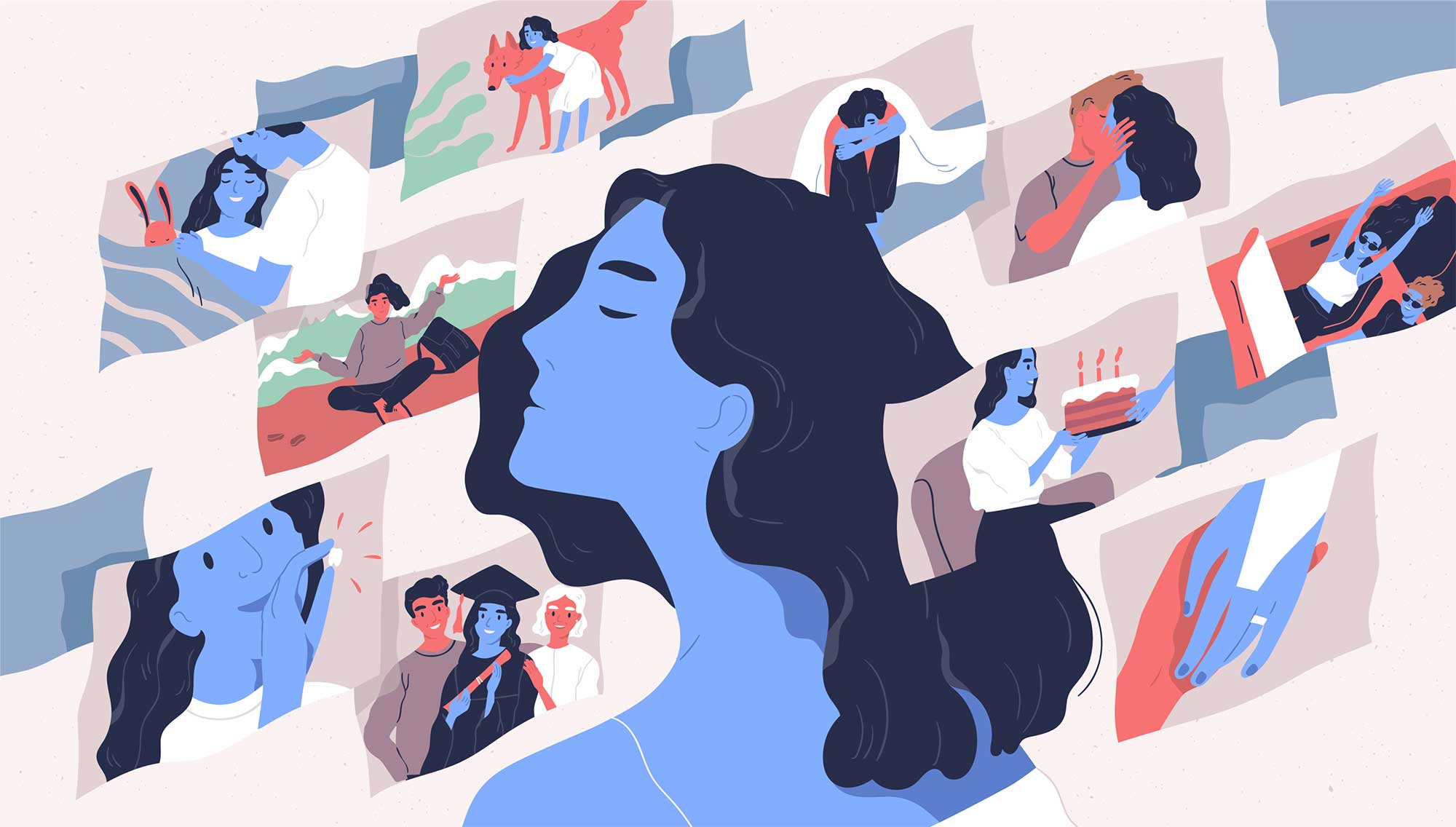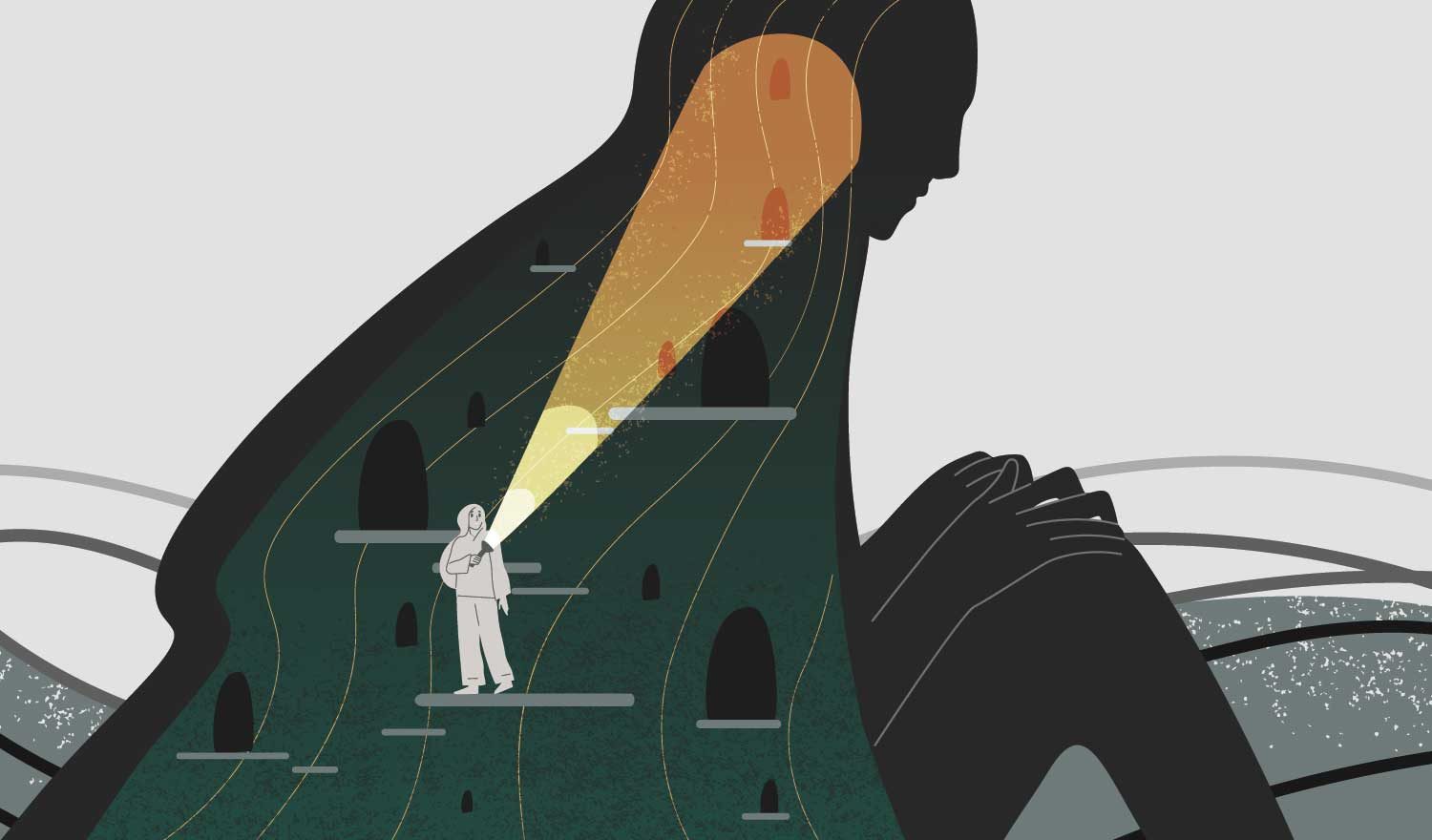Being present and welcoming of your emotions as they arise, as well as learning to uncover and release stored emotions will make a huge difference in your life. I didn’t know how to do it until I was 35, few of us ever do, and I’m still finding new pockets of buried emotions with knots around them saying: It’s not safe to go here.
This is work, uncomfortable at times and against our old programs, but it’s very worth it. I’ll tell you right away that I rather hang out in a community with people comfortable being with their uncomfortable emotions, rather than people covering all the uncomfortable ones up under a mask of spiritual tranquility. (Because that’s the lesson my own inner parts has taught me when I go put that mask on…They don’t trust that spiritual master one bit.)
As I mentioned in the article on Self-Love, true compassion and love for yourself already exists inside of you, it’s your nature and it has never left you. But there is probably a thing or two in the way. More specifically:
- Unconscious beliefs
- Protection mechanisms to protect us from the pain that these unconscious beliefs are causing us
- Stored emotions
So if you want to get in touch with a more true sense of self and feel deep nurturing love for yourself and others, it makes sense to learn a thing or two about how to clean out the stuff in the way.
Why are the emotions important?
The process of cleaning out the stuff in the way of feeling happiness is all leading back to those unconscious beliefs that was formed during some point in our life. But to shift them the emotions need to be released. A lot of the time, all that is needed to take apart an unconscious belief is:
- Awareness of the belief, ie seeing it clearly and what part of you is holding it, from an observer point of view
- Attention on the emotions that has been built up because of it
- Releasing the emotions, through presence in the body and without believing the story about it (ie not program the story deeper, which would keep things exactly as they are)
You might suspiciously be reading this and wonder “Is that it??”, and yes, it is. But it’s a little bit like saying that to win the Olympic gold medal in high jump you just need to jump really high. Sounds simple enough, but to actually get there you need to understand a thing or two, learn new skills and most importantly PRACTICE the skills so you get better and better at them.
So while the list might seem simple there are a lot of different skills hidden in the steps. Skills that no one taught you and that you haven’t spent much time practicing. To step out into the observer and not being pulled into believing the stories your mind is telling you, while having the strongest feeling of fear and shame going on in your gut. That’s what self mastery is about and it doesn’t happen overnight or because you read a book. It. Takes. Practice.
The moment we think we master it a new opportunity for growth (ie a really painful experience that brings you to your knees and humbles you) show up. Champagne!
Also, your emotional reactions are a golden opportunity to become aware of and find unconscious beliefs underneath. They point you to the root of a bigger structure and can be your allies on a journey to greater self awareness and happiness. When you shift your point of view that way – from feeling like a victim to circumstances and reactions happening inside, to using them as your clues to find the next layer to practice your skills on, then you’ve already taken a HUGE step towards a different way of relating to your inner world. You have started to put your hands on the wheel by saying: I want to learn about what is going on inside of me.
With this I hope to have given you some background and understanding to WHY it is of most value to learn to regulate and master your emotional reactions, as well as to go further and use the skills to take apart unconscious beliefs and live a more free and joyful life. I want to emphasise, when I say “master your emotions” it’s NOT about controlling and decide which ones are allowed or not. Very far from that. It’s about being the master on releasing them, being present with them and allow them to guide you into healing, instead of keeping you in the old neural pathway loop.
ONE emotional practice you’ll be happy you practiced
I you’re up for it, here is ONE simple practice to ponder and dive into right away:
Learn to recognise what different emotions feel like in your body
You know how it goes. We’re going about our day and are feeling okay, and then suddenly something flips a switch inside and you start…feeling things. Something in a conversation, a situation or even an internal thought can set it off. It seem to appear out of nowhere and there we are – in full blown reaction of fear, anger, jealousy, sadness or something else. It will take your mind time to figure out what is going on once a reaction has set in. Your limbic system that is driven by your unconscious has already stepped in and old neural pathways are firing. Stories, reactions and protection mechanisms are screaming loudly and from here you will not do your best thinking. But if you know what certain emotions feel like in your body, it will help you to recognise what is happening and what emotion is showing up.
Start with small and easy once. How do you recognize sadness or curiosity in your body? They are felt in the body, that’s why we call them feelings. Is there a tension somewhere or a tingling? A heaviness or numbness? Where in your body can you feel it and what combination of sensations are there with one emotion?
Let this take some time and research. Every time you experience the emotion, feel into your body and create a recognition of the bodily sensations that comes with the emotion. When I feel worried for example, my shoulders go up and the muscles around them tense, my eyes tends to be directed more down toward the floor and my breathing is happening in my chest, not my belly.
Start practicing this, and maybe create your own inventory of how your body responds to certain emotions. It will give you a better chance to recognise what kind of reaction and emotion is active and this will help you to start talking to yourself from the observer perspective and get your prefrontal cortex back online again.
Level up
When you’ve explored and practiced this for a while you might specifically want to focus on some of the crucial emotions that are often activating big structures of protection mechanisms like denial, defence, anger, hiding, freeze, depression, hopelessness etc.
Are you ready to go for the gold right away? Okay, here it is:
Shame
It’s the feeling that who we are caused something bad that happened. Not what we DID, but who we ARE. (When we feel bad about something we DID, that’s guilt.)
“I am so stupid, they don’t want to be with me”
“It’s because I look this way that no-one loves me”
“Mom and dad are fighting because I’m bad”
“I’m a sissy”
“I’m such a jealous mess, no wonder she left”
Shame.
The hot rush we feel in our cheeks and the feeling of wanting to hide. Can you recall a time feeling like that? Can you right now recognize what it feels like in your body?
In a painful situation, often where we experience disconnection like someone punishing us, hurting us or simply cutting off our connection with them or others, we very often turn to shame. A part of us believing that who we are caused this to happen. This belief of unworthiness causes more pain and in comes the armour, our defence strategy. The protection strategy looks different for different people and it all happens in a split second. After years of this reaction we don’t even notice the pain and the shame anymore but jump directly to anger, hopelessness, freeze or shutting people out. That’s why our reactions can become very confusing, to the people around us and to ourselves. We are not aware of the hidden dots that builds that chain of reaction.
Learn what shame feels like in your body when it comes to visit. It will save you a lot of extra layers of baggage to clean out later. And getting to know when it shows up for you will most likely put you in touch with past experiences when you’ve felt shame. Now you can gently start acknowledging these situations and release the emotions and the beliefs around them.
I just found a big pocket of old shame and I’ll be practicing all week.
If you’re new to this work and want to learn all the Self Mastery skills in changing your unconscious beliefs, then a good starting point is our free Introduction Course with 4 lessons over 4 weeks.
And if you’ve been in this work for a while there are two exciting opportunities coming up:
Starting August: Being Me – 3-month masterclass for women in connecting to what you truly want
Starting September: Beyond the Mind – a self mastery meditation journey into consciousness



